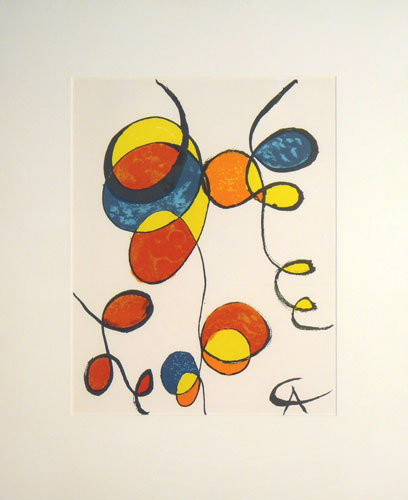Art: Additional Resources
PCC Student Art
Where are we Now: PCC Art Student Exhibition 22/23
Where Are We Now, is an opportunity to check in, take stock and remain present amidst the complexities and challenges we all continue to face. To honor all of the students who have been making art in PCC classes this past year, our 3rd annual college-wide Art Student Exhibition invites us to consider where we are now and where we see ourselves going from here.
ZOOM OUT: PCC Art Student Exhibition 21/22
ZOOM OUT, our 2nd Annual college-wide Virtual Art Student Exhibition is an opportunity to consider the many contexts in which art work at PCC was made this past school year. PCC Art students continue to create in a time of great uncertainty. In the context of an ongoing ecological crisis, and our national struggle for civil rights, gender and racial equality, zooming out can allow us to think about how the art we’ve made this past year is part of this larger, global conversation. This exhibition is also an invitation to see ourselves as connected, in our homes, our art studios, our offices and the many other spaces where we create.
A literary journal of poetry, fiction, non-fiction, artwork, and photography from around the world and curated by the students at Portland Community College, Sylvania.
Art in the PCC Library
-
Art in the PCC Library
 The PCC Library has a wonderful collection of both local and national artists represented throughout the buildings. PCC participates in the "Percent for the Arts" approved by the Oregon legislature and the Oregon Arts Commission. View the collection virtually or download a map for each campus library to explore on your own.
The PCC Library has a wonderful collection of both local and national artists represented throughout the buildings. PCC participates in the "Percent for the Arts" approved by the Oregon legislature and the Oregon Arts Commission. View the collection virtually or download a map for each campus library to explore on your own.
Alexander Calder's "Book Cover" can be found in the Sylvania Library on the 2nd floor.
Streaming Art Films
-
Art and Architecture films from Films on Demand
 All the videos in the Art and Architecture collection of Films on Demand collection are available to stream online.
All the videos in the Art and Architecture collection of Films on Demand collection are available to stream online. -
Visual Art films from Kanopy Streaming Videos
 Browse all the videos available in the Kanopy Streaming Videos collection using the "Browse Subjects" area or using the search box.
Browse all the videos available in the Kanopy Streaming Videos collection using the "Browse Subjects" area or using the search box.
Art in Oregon
-
Oregon Artswatch
 Oregon ArtsWatch is a non-profit arts and culture journalism project that explores the arts and their intersection with the wider culture in Oregon and the Northwest.
Oregon ArtsWatch is a non-profit arts and culture journalism project that explores the arts and their intersection with the wider culture in Oregon and the Northwest. -
Art Shine ProjectThe Art Shine Project was created by the organization Art in Oregon to develop a curated artists database that includes emerging, mid-career, and established artists. This database serves as a digital gallery to facilitate the purchase and placement of artwork in local communities.
-
Art in Oregon (AiO)The mission of Art in Oregon is to foster culturally rich regional communities through partnerships, advocacy, and investment in artists, businesses, educational spaces, and community spaces. Our goal is to build and sustain art patronage through pride in Oregon artists and pride in art ownership. We work to establish collaborative relationships with the common goal of increased visibility and access to art for all people.
Grants & Fellowships
Includes a section on resources for individual artists and grants
Regional Museums
-
Portland Art Museum
 The oldest museum in the Pacific Northwest, the Portland Art Museum is internationally recognized for their collection.
The oldest museum in the Pacific Northwest, the Portland Art Museum is internationally recognized for their collection.
The Portland Art Museum offers a College Creative License to students with a valid student ID that includes unlimited admission for a year for a nominal fee.
-
Seattle Art Museum (SAM)Includes information about the SAM, Seattle Asian Art Museum and the Olympic Sculpture Park
-
Tacoma Art Museum
 The collection of the Tacoma Art Museum focuses on Western American Art including a permanent collection of Dale Chihuly's work.
The collection of the Tacoma Art Museum focuses on Western American Art including a permanent collection of Dale Chihuly's work. -
Museum at Warm SpringsMuseum project supported by the Tribal Council of The Confederated Tribes of Warm Springs Reservation
-
Listing of Oregon Art Galleries
 From Art-Collecting.com. Includes a Portland Gallery Guide, Artists websites, and other art resources.
From Art-Collecting.com. Includes a Portland Gallery Guide, Artists websites, and other art resources. -
Listing of Washington Art GalleriesFrom Art-Collecting.com. Includes major regional libraries around Washington, artists websites and other art resources
-
Portland Institute for Contemporary Art (PICA)"PICA’s programming supports the experiments of the most vital and provocative artists of our time. Our vision is international, intergenerational, interdisciplinary, and decidedly forward thinking (even when those explorations look back in history). PICA is unique among institutions for working right alongside artists at the increasingly blurry boundaries between forms and at the edge of new ideas. "
Museums of note
-
Metropolitan Museum of Art
 "The Met" is located in New York, New York, but has travelling collections located around the world.
"The Met" is located in New York, New York, but has travelling collections located around the world. -
Museum of Modern Art
 Known as MoMA, The Museum of Modern Art located in New York, New York has a collection world renowned collection of modern and contemporary art. Some of the collection can be viewed via the site.
Known as MoMA, The Museum of Modern Art located in New York, New York has a collection world renowned collection of modern and contemporary art. Some of the collection can be viewed via the site. -
Smithsonian Museums
 The Smithsonian has 19 museums and galleries including the African American History and Culture Museum, African Art Museum, American Art Museum, American Indian Museum, Freer Gallery of Art, National Portrait Gallery, Renwick Gallery, and the Cooper Hewitt Design Museum. Most of the museums have virtual galleries you and browse through.
The Smithsonian has 19 museums and galleries including the African American History and Culture Museum, African Art Museum, American Art Museum, American Indian Museum, Freer Gallery of Art, National Portrait Gallery, Renwick Gallery, and the Cooper Hewitt Design Museum. Most of the museums have virtual galleries you and browse through. -
Museum of Contemporary Art, Los Angeles
 Devoted to art produced from 1940 to present in all mediums.
Devoted to art produced from 1940 to present in all mediums.
Google Arts & Culture
-
Google Arts & CultureHas information about artists, themes, and online exhibits from around the world.
ARTNews
PCC also has print copies of ARTnews at the Rock Creek and Sylvania libraries that you can request to be sent to your closest campus library.
